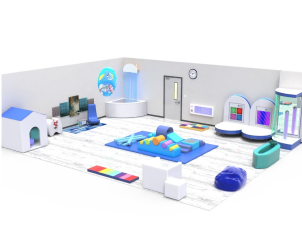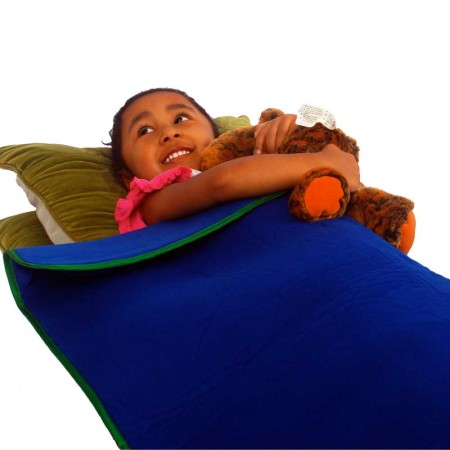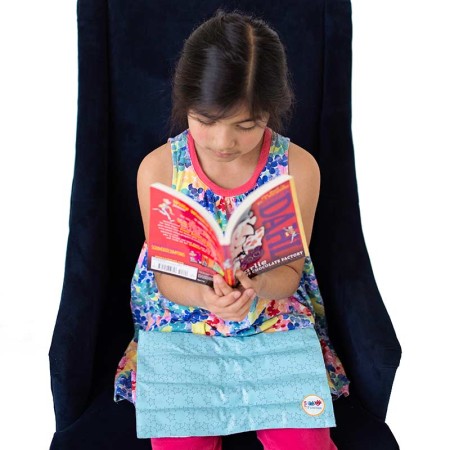Are you troubled by some behaviors that you are seeing in your 3-year old? Chances are they may be quite normal but they may also be related to Sensory Processing Disorder (SPD), a condition where the brain does not accurately perceive sensory information (sight, sound, taste, touch, smell or even motion). It is sometimes referred to as Sensory Integration Disorder.
Hypo or hyperactive behaviors can result when sensory information is not being processed accurately. While a tantrum or behavior issue may be attributed to "just being 2," a persistent pattern at age 3 may require professional attention. Here are a few signs to look out for:
Sensory Over Responders
These are individuals who over respond to stimuli. Things seem too loud, too hard, too heavy, too sticky, too wet and, well, just too much! Sensory Over Responders do not like to get too messy. They avoid noisy, public places as well as tags in their clothing. A fireworks display can send them running for cover.
Other signs may include:
- Extreme response to or fear of sudden, high-pitched, loud, or metallic noises like flushing toilets, clanking silverware, or other sounds that seem inoffensive to others
- May notice and/or be distracted by background noises that others don't seem to hear
- Fearful of surprise touch, and avoids hugs and cuddling even with familiar adults
- Seems fearful of crowds or avoids standing in close proximity to others
- Doesn't enjoy a game of tag and/or is overly fearful of swings and playground equipment
- Extremely fearful of climbing or falling, even when there is no real danger i.e. doesn't like his or her feet to be off the ground
So, what is the benefit of being over responsive? These individuals are generally organized, on time and on task. Strategies for sensory over responders should help to calm and reassure. They may benefit from weighted blankets, calming swings, soothing music and tools and sensory rooms for calming.
Sensory Under Responders
These are individuals who under respond to stimuli. They don't hear their name when you call them. They lose their backpack. They slouch. They fall down. They forget and they are disorganized. Sensory Under Responders are often lost in a big crowd of kids.
A few other cues may include:
- Clumsy and uncoordinated movements
- Has poor balance, may fall often
- An extremely high tolerance for or indifference to pain
- Doesn't respond to their name or you have to call them over and over
- Forgetful
- Drops things
- Appears disorganized
- Muscle tone is low
- They miss visual cues that are easy to notice or see
What is the benefit of being a sensory under responder? These individuals are generally relaxed and don't over react under pressure. Strategies should help organize and alert. They may benefit from tools that help them stay focused and alert such as a therapy ball, wiggle cushion, timer and a rocker board.
Sensory Seekers
These individuals are constantly touching, pushing, grabbing, shouting, jumping, biting and on the move. These children get in trouble a lot because they don't know how to use their energy appropriately. They love recess and competition.
Some other signs may be:
- A constant need to touch people or textures, even when it's inappropriate to do so
- Doesn't understand personal space even when same-age peers are old enough to understand it
- Often harms other children and/or pets when playing, i.e. doesn't understand his or her own strength
- May be very fidgety and unable to sit still, enjoys movement-based play like spinning, jumping, etc.
- Seems to be a "thrill seeker" and can be dangerous at times
What are the benefits of being a sensory seeker? These individuals tend to be alert, on and never tired. They are also highly creative. Strategies should re-direct their high energies into more purposeful activities. They may benefit from eye-hand coordination games, weighted lap pad, comfort seating, jumping activities, and active swings.
If you have concerns that your child may have SPD, it's best to visit your doctor and an occcupational therapist for testing and an accurate diagnosis.
Please reach out to us with any questions or comments you have. We love to hear your thoughts! Share with us at social@funandfunction.com or on our social media pages!
Check out our favorite tools for sensory seekers.
This post was originally posted on 10/10/2019 by Ilana Danneman, PT and Aviva Weiss, MS, OTR/L. It was updated for accuracy and comprehensiveness on 04/11/2022.
























Comments